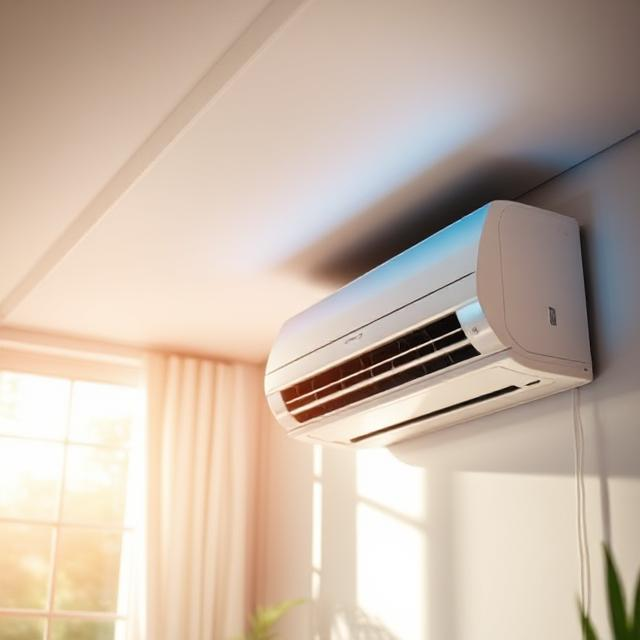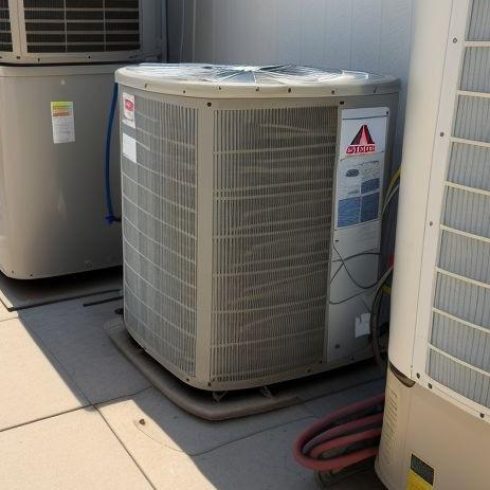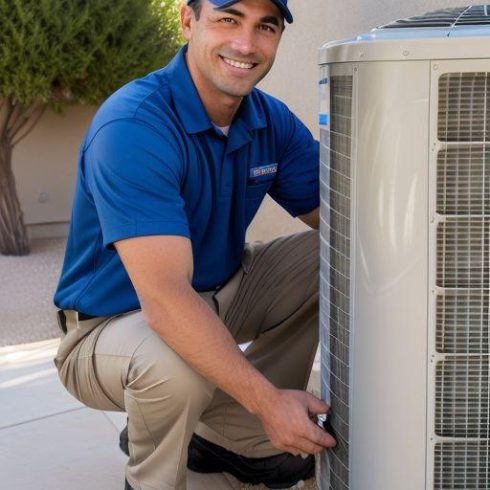Why Is My AC Blowing But Not Getting Cold?
When the heat of Palm Desert, CA hits hard, you rely on your air conditioning system to keep you cool and comfortable. But what happens when your AC is blowing air but not getting cold? This situation can be frustrating and uncomfortable. Understanding the common issues that cause this problem is essential for homeowners. In this article, we’ll explore various reasons why your AC might not be cooling properly and what steps you can take to resolve it.
Why Is My AC Blowing But Not Getting Cold?
If your air conditioner is blowing air but isn't cool, several factors could be at play. Here are some possibilities:
Thermostat Settings: Sometimes, the simplest explanation is the right one. Check if your thermostat is set to "cool" mode and that the temperature setting is lower than the current room temperature.
Dirty Air Filters: Clogged or dirty air filters restrict airflow and can prevent your system from cooling effectively. Regular maintenance can help keep filters clean.
Refrigerant Issues: Low refrigerant levels usually indicate a leak in the system. Without enough refrigerant, your AC cannot cool the air effectively.
Faulty Compressor: The compressor is crucial for circulating refrigerant throughout the system. If it's malfunctioning, it may not compress refrigerant correctly, leading to insufficient cooling.
Blocked Condenser Unit: If outdoor debris blocks your condenser unit's airflow, it can struggle to dissipate heat effectively.
Ductwork Problems: Leaks or blockages in ductwork can prevent cool air from reaching specific areas of your home.
Electrical Issues: Problems with wiring or electrical components can disrupt power supply to critical parts of your AC system.
Understanding these common issues will help you diagnose why your AC is blowing but not getting cold.
Common Causes of AC Malfunction
1. Thermostat Troubles
Your thermostat controls when the AC turns on and off based on the temperature settings you input. If it’s malfunctioning or miscalibrated, it may not trigger cooling when necessary.
How to Check Your Thermostat
- Ensure that it’s set to “cool.”
- Replace batteries if it's battery-operated.
- Clean any dust around it for accurate readings.
2. Dirty Air Filters
Air filters trap dust and allergens, but over time they become clogged with dirt and debris.
Impact of Dirty Filters
- Reduced airflow leads to higher energy consumption.
- Inefficient cooling results in warmer indoor temperatures.
Solution
Check filters monthly during peak use seasons and replace them every 1-3 months based on usage.
3. Refrigerant Levels
Refrigerant plays a vital role in absorbing heat from inside your home and releasing it outside.
Signs of Low Refrigerant
- Ice buildup on evaporator coils.
- Hissing or bubbling sounds indicating leaks.
What to Do
Contact a local HVAC contractor near me to inspect for leaks and recharge refrigerant levels safely.
4. Faulty Compressor
The compressor pumps refrigerant through the system; if it's faulty, cooling will suffer significantly.
Symptoms of a Bad Compressor
- The unit makes strange noises.
- The compressor runs constantly without cycling off.
Next Steps
A professional inspection is necessary as compressor repairs or replacements can be complicated and expensive.
5. Blocked Condenser Unit
Your condenser unit needs unobstructed airflow to operate efficiently.
Identifying Blockage Issues
Look for:
- Leaves
- Debris
- Tall grass
Preventative Measures
Keep at least two feet of clearance around external units for proper airflow and efficiency.
Common Solutions for an Underperforming AC
1. Regular Maintenance Checks
Setting up regular maintenance visits with an hvac con HVAC contractor near me ensures that all systems are functioning properly before peak seasons hit.
2. DIY Cleaning Techniques
Learn basic cleaning techniques for filters, condenser coils, and drain lines to ensure optimal performance without waiting for professional help.
3. System Upgrades
Sometimes older systems can't keep up with modern demands; consider discussing upgrade options with local contractors who understand regional needs.
Professional Help: When To Call an HVAC Contractor Near Me?
If you've tried troubleshooting without success, it's time to call in a professional:
An experienced HVAC contractor near me can assess problems accurately and provide solutions tailored to local climate conditions.

Frequently Asked Questions (FAQs)
1. Why does my AC blow warm air instead of cold?

It usually stems from issues like thermostat misconfiguration, dirty filters, or low refrigerant levels affecting performance.
2. How often should I change my AC filter?
Change it every 1-3 months depending on usage levels; more frequently if you have pets or allergies.
3. What do I do if my AC freezes up?
Turn off the unit immediately; let it thaw before restarting, then check filters & airflow.
4. Can I add refrigerant myself?
It's not advisable; incorrect handling can lead to further damage or safety hazards.

5. How often should I schedule maintenance checks?
At least once a year before summer begins ensures everything's in good shape.
6. What are signs that I need a new AC system?
Frequent repairs, high energy bills despite consistent use patterns, and age over 10 years are key indicators.
Conclusion
Experiencing warm air from an otherwise functional AC system can be frustrating for anyone living in Palm Desert, CA where summers get hot fast! From simple fixes like adjusting thermostats or changing filters to more complex issues like refrigerant leaks or compressor failures—knowing what could go wrong helps prepare you when things don’t go as planned! When troubleshooting doesn't solve the issue, do not hesitate to call an HVAC contractor near me who understands local climate needs best! Keeping cool shouldn't feel impossible even during peak summer heat!
This comprehensive guide serves as a resource for diagnosing why your AC might blow warm instead of cold air while providing clear action steps towards resolution—ensuring comfort throughout those hot desert days ahead!